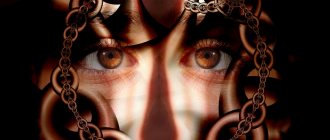Schizophrenia is classified as a group of psychotic disorders characterized by severe course and personality disorder.
The disease is difficult to control if you do not adhere to strict treatment rules. But there are forms of schizophrenia that have less aggressive manifestations and are easily treatable, despite their progression. One of these is neurosis-like schizophrenia. This form of disorder is easily confused with manifestations of neurosis. But as the disease progresses, their differences become obvious.
General picture of the disease
Neurosis-like schizophrenia (also called pseudoneurotic schizophrenia) most often affects adolescents, but the disease also occurs at older ages. Some signs of the disorder may appear in childhood.
Here is the life story of one young man suffering from this form of the disorder. In childhood, there was a tendency to find it difficult to form friendships. It was difficult for him to communicate with his peers, although the desire to establish contact always remained. Forced loneliness caused a depressed mood, and the difficult situation within the family worsened the situation. Periodically, he was overtaken by apathy and depression, and thoughts of suicide appeared. But, as the patient himself claims, they did not last long, only a couple of days.
Pseudoneurotic schizophrenia is classified as a schizotypal disorder, since the list of its symptoms and signs does not include such typical schizophrenic manifestations as delusions and hallucinations.
In the clinical picture of the disease, neurotic symptoms predominate, which is why the disorder is called neurosis-like schizophrenia. But with further development, when psychopathology becomes more and more pronounced, the disorder is diagnosed as psychoneurosis.
The onset of neurosis-like schizophrenia is very difficult to distinguish from the picture of neurosis. The following criteria help determine the diagnosis:
- The development of neurosis is preceded by severe psycho-emotional shock or prolonged chronic stress. Schizophrenia manifests itself for no apparent reason;
- people suffering from neurosis realize the painfulness of their condition and seek help themselves. Patients with pseudoneurotic schizophrenia do not see the strangeness of their behavior. As a rule, relatives begin to sound the alarm;
- neurosis, while bringing great inconvenience and suffering to the patient, does not leave an imprint on his personality traits. Neurosis-like schizophrenia, even with its gentle course, causes persistent personality changes, with the progression of negative symptoms;
- neurosis is completely and irrevocably cured. This form of schizophrenia responds well to treatment, but it will not be possible to get rid of it forever. Long-term remissions are possible, but traces of the disorder and individual pathocharacterological personality traits remain. Moreover, the disorder can always return.
Diagnosis of pseudoneurotic schizophrenia
To establish a diagnosis in our Leto clinic, you should make an appointment with a doctor. To do this, you need to call the call center. At the reception, the operator on duty will help you choose the most convenient time and day. Recording is carried out around the clock and seven days a week. We remind you that any format of diagnostic activities, as well as treatment in our mental health center, are anonymous.
During the initial consultation, the psychiatrist carefully examines the client.
For this purpose the following is carried out:
- Listening to complaints with specific and guiding questions. The specialist often has to resort to the help of relatives to clarify the details of the course of the disease process.
- Inspection and identification of problems with internal organs. The doctor auscultates the heart, bronchopulmonary system, and palpates the abdomen.
Study of the functions of the nervous system. To do this, using a neurological hammer, the reflex response from the tendons is checked, oculomotor functions are determined, and pathological symptoms (if any) are identified.- Psychodiagnostics.
Patients with a suspected diagnosis of neurosis-like schizophrenia must be examined by a clinical psychologist. Using test methods and questionnaires, a psychologist supplements and clarifies the painful signs identified by the doctor.
The examination is complemented by clinical studies:
- Blood test.
- Electrocardiogram.
- Encephalogram, computed tomography and MRI if necessary.
If necessary, patients are examined by specialists from other areas.
Characteristic signs of the disorder
A clear cause of the disorder has not yet been established. But factors that can provoke its occurrence have been recorded. These include childhood psychological trauma.
For example, a teenager who was given a similar diagnosis had parents in constant conflict during his childhood. As the boy himself noted, if they did not quarrel with each other, then they were in conflict with him. The family lived in a one-room apartment, so there was nowhere to hide from this. But the child constantly wanted silence.
Other factors predisposing to the disorder include:
- nervous tension;
- overwork;
- long-term conflicts in the family or at work;
- pathologies of fetal development during pregnancy;
- drug abuse.
The main symptom that accompanies neurosis-like schizophrenia throughout its entire course and distinguishes it from other forms of this disease is phobia. Sometimes they are unfounded and pretentious in nature, which is why they differ from fears in neurosis. For example, the fear that things might get scary. Or fear of putting on glasses, as this will provoke a transition to another reality. The fear that if you count to 10, you will soon die.
Common phobias include fear of open spaces, getting sick, getting dirty, social phobia, fear of being in a dangerous situation and not getting help.
Phobias grow deeply into the patient’s life, and he gradually loses control over himself and criticism of his behavior. Over time, a person stops reacting emotionally to them and talks about them without a horrifying connotation.
Instead of phobias, obsessive actions and rituals come to the fore. The patient may roll over his left shoulder 3 times, bite his nails, or go to bed wearing a hat and one sock. Ritual actions are overly intrusive. And a person can even force others to do them. For example, a teenager forced his mother to touch the leg of a chair before he sat on it.
Obsessive actions can be the most unpredictable. So, among the patients there are also shopaholics. This is also a kind of obsessive desire, which manifests itself in uncontrolled purchases in unlimited quantities. But schizophrenic shopaholics do not lament the fact that they bought too much or do not have enough finances: they are satisfied with everything.
Unlike neuroses, when a person tries to hide his obsessions and compulsions and seek help as soon as possible, this does not happen with pseudoneurotic schizophrenia. The patient, on the contrary, without being embarrassed by those around him, performs his rituals as many times as he needs, demonstratively and without embarrassment.
Obsessive thoughts are associated with fruitless philosophizing or metaphysical intoxication. These are useless thoughts about the issues of the universe. A person becomes fixated on his unrealistic, overvalued idea, and no one is able to convince him. Hearing criticism addressed to himself, he only strengthens the opinion of his uniqueness. He can rant for hours about the place of man on Earth, about the existence of other civilizations, about the meaning of life, but at the same time never expressing an adequate thought. His reasoning is contradictory, primitive and absurd. He writes his sayings in his diary, but it is impossible to read them.
For the sake of their valuable ideas, such people give up work and stop communicating with friends. They are constantly looking for some information and writing it down. But if you ask them about their idea, you don’t get a clear answer.
Other obsessions are associated with uncontrollable thoughts that bring the patient both satisfaction and horror.
One teenager constantly imagined himself being crushed by a car, his body smeared on the road, his insides turning outward. And this gave him unimaginable pleasure.
In another case, such thoughts drive their owners to suicidal attempts, driving them into despair.
Some pretentiousness and mannerism appear in the behavior of patients with pseudoneurotic schizophrenia. This is more common among women. Their makeup becomes bright and unnatural, and their clothes become ridiculous, flashy and inappropriate. The patient can wear shorts in the summer and complement the ensemble with a fur coat.
Substance abuse
In patients with schizophrenia, substance abuse is relatively common as a mental disorder concomitant with schizophrenia . According to S. Andreassen et.al. (1987), “although psychopathological conditions predispose to the abuse of various substances, this abuse also predisposes to psychopathological conditions.” If substance abuse precedes the onset of schizophrenia, it accelerates the time of its onset.
Almost 50% (in the literature this percentage varies significantly - 15-70%) of patients with schizophrenia, most often men, demonstrate dependence on psychoactive substances. At the same time, neurotic (anxiety disorders, phobias), personality and affective disorders are more often combined with alcohol abuse than schizophrenia.
Main causes of substance abuse in schizophrenia
- Use of psychoactive substances for the purpose of self-medication: relief of depressive spectrum disorders, negative symptoms, side effects of antipsychotic therapy;
- Inadequate therapy with drugs that are dangerous in terms of the formation of addiction (benzodiazepines, anticholinergics, etc.);
- Negative suggestibility, imitation of other people;
- Conformism;
- Facilitated access to psychoactive substances.
According to K. Muesser et al., (1990), in the group of patients with schizophrenia, schizoaffective disorders and schizophrenia-like psychoses, 47% drink alcohol, 42% use cannabis, 25% use stimulants, 18% use hallucinogens, 7% use sedatives, 4% - “drugs as such.”
Substance abuse and schizophrenia
- Increased severity of positive symptoms;
- Frequent relapses of schizophrenia;
- Frequent hospitalizations;
- The need for long-term treatment in a special hospital;
- Financial difficulties;
- Viral infections caused by infection through parenteral administration of psychoactive substances;
- Criminal behavior.
It has been noted that patients with schizophrenia are more inclined to take dopaminergic drugs, which partially reduce negative symptoms, while provoking a number of productive symptoms (Steinberg J., 2001). Cocaine and amphetamine, as typical dopamine agonists, are characterized by exacerbation of symptoms of schizophrenia.
Substance abuse usually begins in the context of poor compliance and inappropriate medication treatment. In the case of a combination of schizophrenia with dependence on psychoactive substances, the prognosis is usually unfavorable, regardless of the use of certain antipsychotics.
In second place after alcoholism in patients with schizophrenia is cannabis abuse. According to various authors, the risk of schizophrenia in case of cannabis abuse is on average 6-7% of all cases of relatively regular use of this substance.
Multiple substance abuse is common in schizophrenia. Due to the above, in patients with schizophrenia it is necessary to carefully collect a drug history and, during the initial examination, check for the presence of psychoactive substances in the body by conducting toxicological screening of blood serum and urine. In terms of differential diagnosis, it should be borne in mind that drug addicts have better social adaptation, interpersonal relationships are easier to build, and sexual activity is increased compared to patients with schizophrenia.
Taking drugs can trigger the manifestation of schizophrenia and contribute to its relapse.
For patients with schizophrenia with comorbid drug addiction, it can be recommended to take fairly strong antipsychotics that simultaneously have a weak anticholinergic effect. In addition, patients with a “dual diagnosis” (schizophrenia and substance dependence) should receive antidepressants in addition to antipsychotics.
According to some data, patients with “dual diagnosis” have an increased risk of developing tardive dyskinesia during treatment with antipsychotics. On the other hand, akinesia caused by taking a neuroleptic and the resulting anergy may contribute to self-medication with psychostimulants. Note that correction of extrapyramidal disorders with the help of anticholinergic drugs can also lead to abuse of the latter. One of the first signs of dependence on drugs of this class should be considered changes in the cardiovascular system: ECG widening of the QRS complex, prolongation of the QT interval and the appearance of tachycardia.
In the presence of poor compliance, which, as we noted above, is often observed in such patients, it is possible to recommend the prescription of long-acting forms of antipsychotics, presumably suppressing the craving for a psychoactive drug. In particular, the use of flupenthixol depot was previously widely practiced in the treatment of schizophrenia combined with alcoholism. Some authors note the effectiveness of amantadine in the treatment of schizophrenia complicated by addiction to cocaine and anticholinergic antiparkinsonian agents (Kosten T., 1989).
It is known that patients with schizophrenia who abuse cannabis respond worse to antipsychotic therapy than patients without drug dependence.
The need for a cautious approach to the relief of intoxication psychosis caused by taking psychoactive substances should be emphasized. The administration of classical antipsychotics can cause epileptiform syndrome in case of overdose of stimulants.
In the process of multimodal-oriented psychotherapy for patients with schizophrenia who use psychoactive substances, it is important to improve compliance, increase motivation for treatment (“motivational interview technique”), and develop a long-term rehabilitation program for such patients, including contract therapy options with the mandatory involvement of family members in therapy sick.
Another important symptom
Considering that the disease often manifests itself in adolescence, body dysmorphomania becomes an indicative symptom of the disorder. At the same time, the teenager is convinced that he has some physical defect. Thick thighs, a large Adam's apple, a huge nose - a Cyrano de Bergerac complex, an ugly mouth. In teenage boys, the penis becomes a frequent object of dysmorphomania: they consider it too small or crooked.
Of course, for adolescence, dissatisfaction with one’s body is a common occurrence. But in pseudoneurotic schizophrenia, such presentations are groundless. The girl has beautiful, slender legs without a shadow of a flaw, but she considers them disgusting.
Often, such people are diagnosed with the disorder when they go to a plastic surgeon with a request to “transform” some part of the body or turn to an endocrinologist for growth hormones if they are dissatisfied with it. They may travel to other cities to have surgery. But it is worth noting that even if such interventions are performed on them, they do not bring satisfaction.
You can also recognize a symptom, even if the patient does not mention it, by his behavior. If a person imagines a defect in his figure, he probably categorically refuses to go to the bathhouse or to the beach; teenagers skip physical education classes. That is, they avoid places where their figure will be clearly visible.
If a person categorically refuses to be photographed, then he may have an imaginary facial defect.
It’s worse when the patient tries to correct his “flaw” himself using improvised methods.
The subject of experience may also be unpleasant odors, in the patient’s opinion, emanating from the mouth, feet or other parts of the body. At the same time, such a person speaks by turning to the side or covering his mouth with his hand. Confident that gases are constantly leaving his intestines, he avoids crowded, closed places (public transport), and sits indoors near an open window.
The idea of ugliness can develop gradually or be born suddenly. For example, a boy, having heard a conversation about hermaphrodites, decided that he had female breasts.
Very often, excess weight among teenage girls becomes a subject of dissatisfaction. They torture themselves with diets or exercise in an effort to achieve perfection. And in most cases they lead themselves to anorexia. Therefore, it is one of the constant companions of neurosis-like schizophrenia, along with suicidal attempts. Patients are capable of hating their “flaw” to such an extent that they are ready to say goodbye to life.
It is worth repeating once again that in pseudoneurotic schizophrenia there is either no objective physical defect invented by the individual at all, or it is minimally expressed. It also happens that a patient may have a real defect, but he does not notice it at all.
Causes
The causes of sluggish schizophrenia are still the subject of research by medical science.
Patients are diagnosed with:
- biochemical disorders of brain neurotransmitters
- hormones that transmit information between neurons: excitation of receptors, excess secretion of dopamine, etc.; - pathologies in the limbic system of the brain:
failure of the functions of the frontocerebellar connections, disruption of the coordinated functioning of the hemispheres.
There was no connection between the occurrence of the disease and the gender of the patient. Statistics show that in men the course of the disease is more severe than in women, that residents of large cities, unprotected social and asocial segments of the population are more susceptible to various forms of sluggish schizophrenia.
Modern scientists consider the main factors in the development of the disease to be:
- genetic predisposition, unfavorable heredity;
- severe stress;
- brain injuries;
- stable unfavorable psychological background in the family, at work, at the place of study;
- past infectious diseases.
Questions and answers
Can a person with schizotypal disorder commit suicide?
Mental disorders in schizotypal personality disorder lead to a decrease in the instinct of self-preservation. And even in the absence of severe depression, a person can greatly harm himself. Therefore, during an exacerbation, the patient requires constant monitoring.
Why was schizotypal disorder previously treated as schizophrenia?
The symptoms of these diseases are similar, and the treatment regimen with medications is approximately the same. However, schizotypal disorder is a mild pathology, it is milder, and it is easier to eliminate it with minimal doses of drugs.








